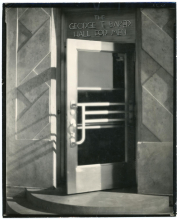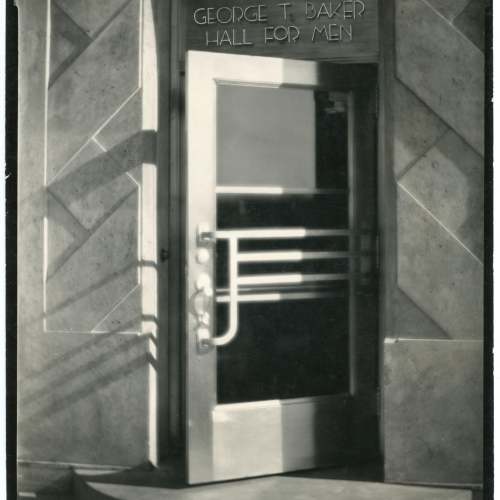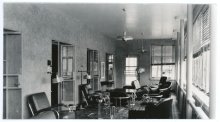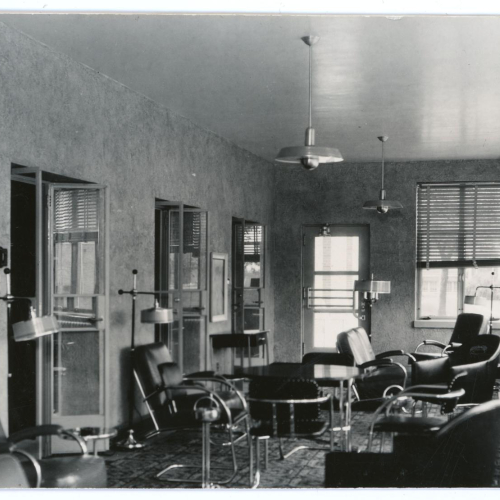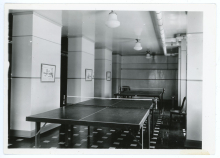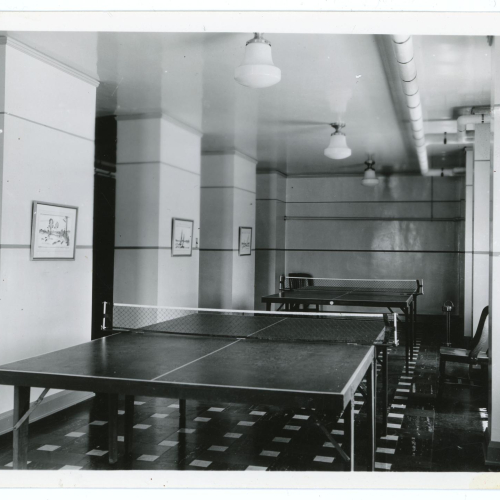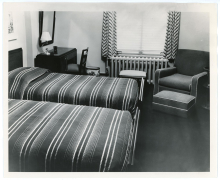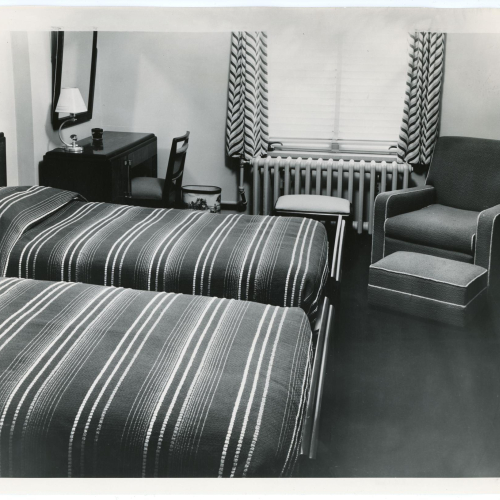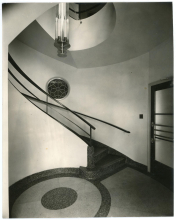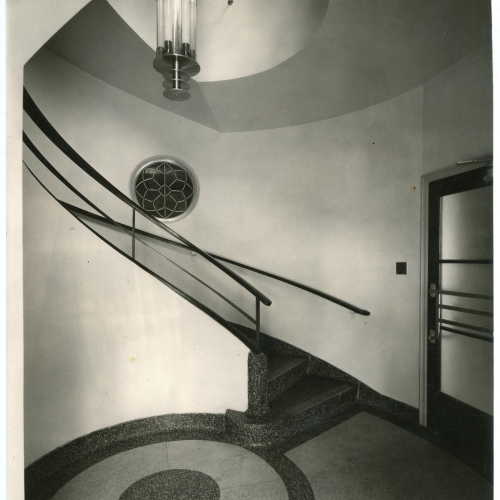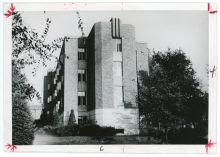Baker Hall including Seerley Hall for Men
From the time that the Iowa State Normal School opened in 1876, until the school's Boarding Department closed in 1892, housing was available on campus for both men and women. When the Boarding Department closed, students had to find housing in the boarding and rooming houses around Cedar Falls, especially in the vicinity of College Hill. Most of the large houses around the edges of campus were built in the 1890s, or shortly thereafter, to meet the demand for student housing.
From the time that the Iowa State Normal School opened in 1876, until the school's Boarding Department closed in 1892, housing was available on campus for both men and women. When the Boarding Department closed, students had to find housing in the boarding and rooming houses around Cedar Falls, especially in the vicinity of College Hill. Most of the large houses around the edges of campus were built in the 1890s, or shortly thereafter, to meet the demand for student housing.
But college officials were concerned about the physical and moral welfare of students, and wanted to be in a better position to monitor their living conditions and their behavior. So, in 1915, the college opened the first wing of Bartlett Hall to provide housing for about 125 women. Additional wings completed in 1916 and 1923 brought Bartlett Hall capacity up to about 550 women.
In the fall of 1934 the Board of Education, predecessor to the Board of Regents, approved plans for a dormitory for men. This brick building, to cost about $140,000, would be built in a style similar to that of the Commons and the West Gymnasium. Architect Oren Thomas of Des Moines drew up the plans. The building would be located south of the Campanile and provide housing for 110 men. Most rooms would be double accommodations, but there would also be twelve single rooms and three guest rooms. Double rooms would be 13 feet X 15.25 feet. Each room would have built-in desks and wardrobes, as well as a lavatory, with hot and cold water. There would also be electrical sockets for lamps and radios. Little touches like these helped to distinguish the new dormitory from the relatively primitive conditions found in some rooming houses. Food service would be provided at the Commons.
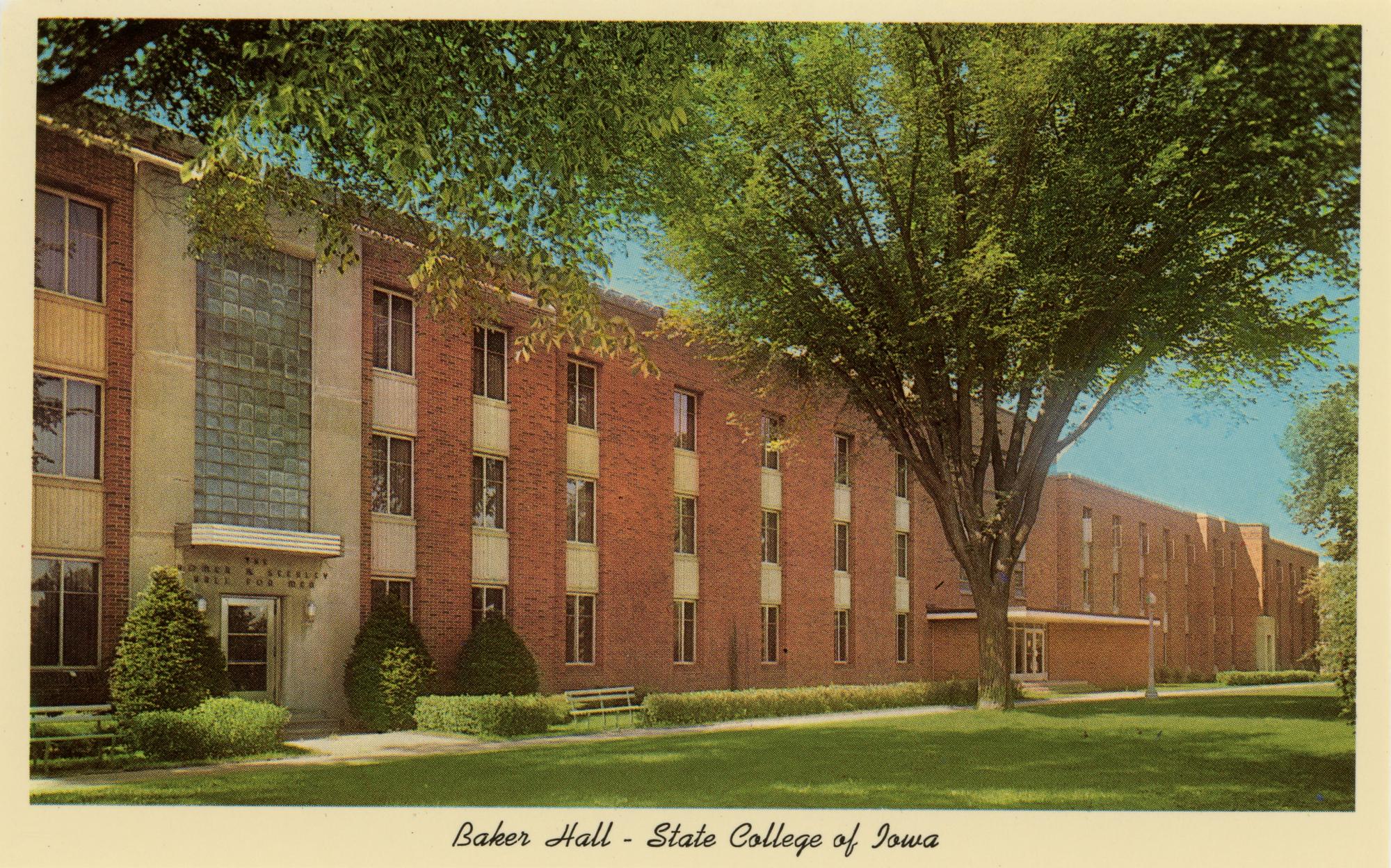
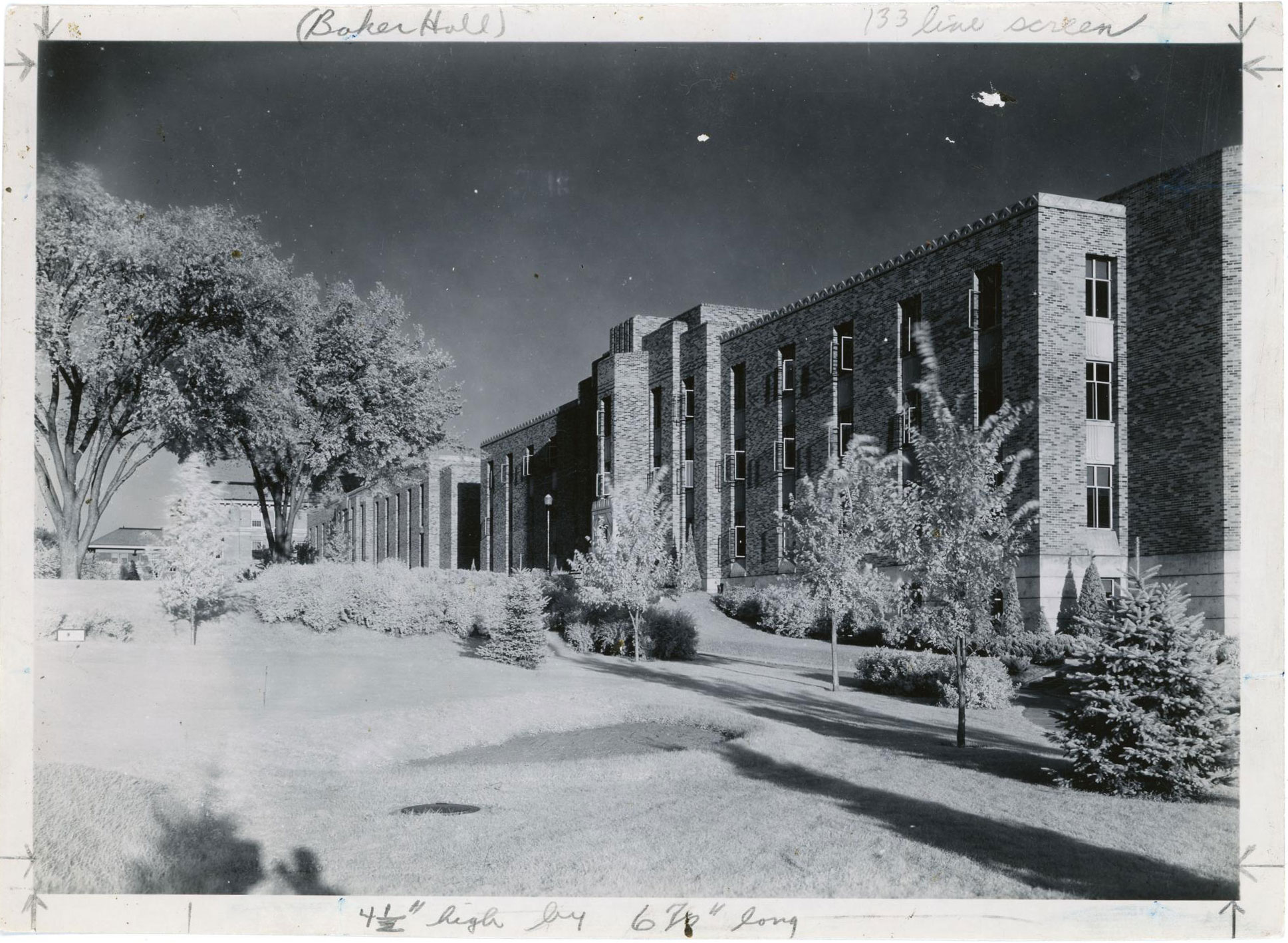
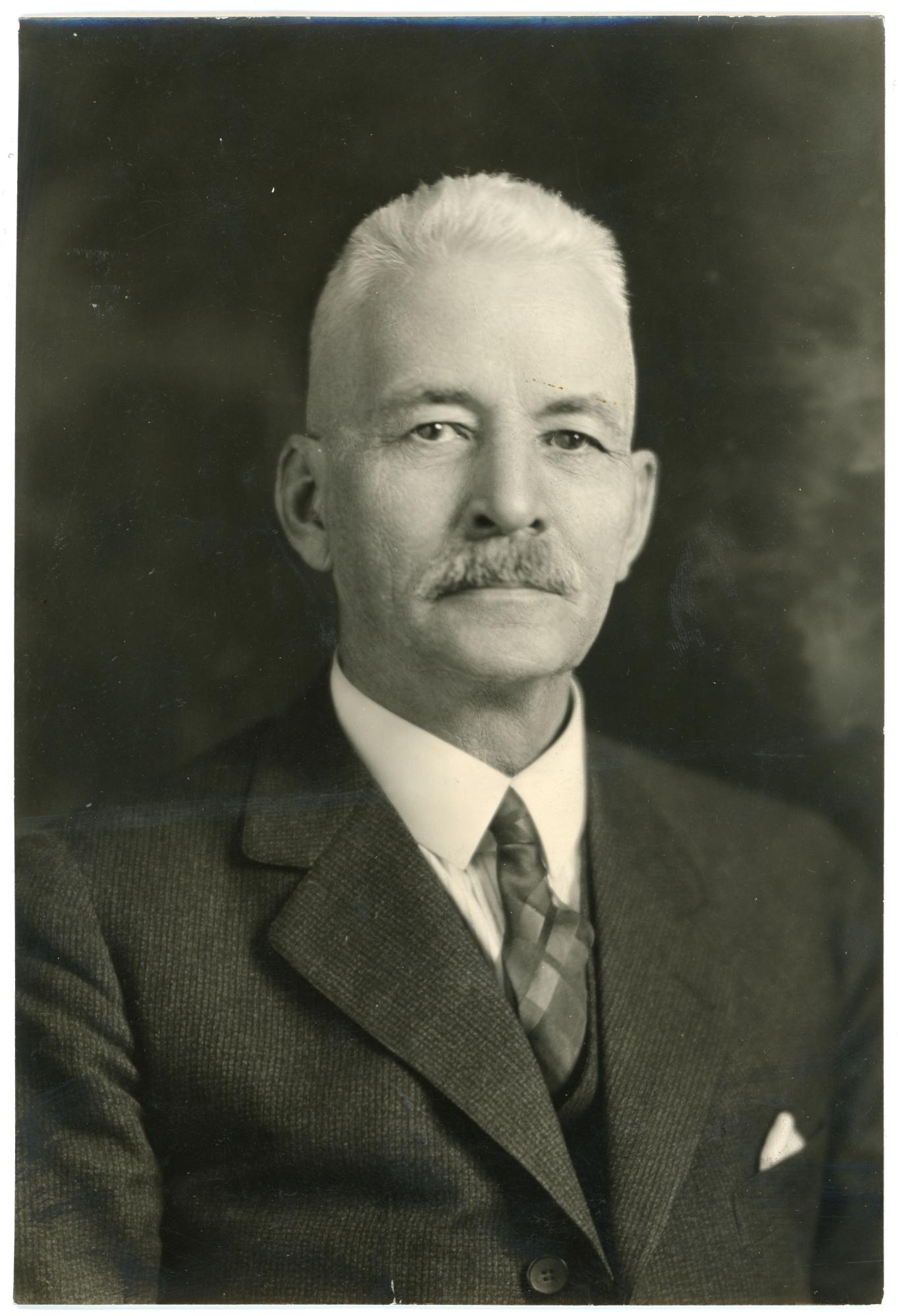
On April 9, 1935, the Board of Education agreed to name the new hall in honor of George Titus Baker, who was a member of the Board of Education from its inception in 1909 until he died on December 13, 1940.
Baker served as president of the board from 1925 until 1940. Educational leaders thought it was fitting that the new men's dormitory be named for a man like Baker, who had been an advocate for increasing the number of men students on campus.
Contracts were let in June 1935. C. C. Larson of Council Bluffs was the general contractor, with plumbing and heating work by P. J. Gallagher Company of Faribault, Minnesota, and electrical work by Wack Electric Company of Council Bluffs. Work was expected to get underway shortly after July 1, 1935, with contracts to run three hundred days.
By August 1935, ground had been broken and work on the walls and supporting pillars had been started. By late September the contractors had completed structural elements up to the roof. The floors and steps had already been poured and masonry work would commence shortly. With the completion date still set for the start of the summer term in June 1936, contractors hoped to have the building enclosed for interior work before cold weather set in. In February 1936 the College Eye reported that room rent for a double room in Baker Hall would be $27-$30 per student per term. Daily housekeeping service would be provided. Public areas would include a lobby, a solarium, recreation rooms, showers, a kitchenette, a pressing room, and a trunk elevator.
Dean of Men Leslie Reed announced that applications for rooms in the new building would be taken beginning April 6, 1936. Grace Griggs, Winifred Peck, and Mrs. J. B. Stewart were appointed housekeepers. By mid-May, final grading and landscaping around the building were underway. The total expenditure for the building and its equipment was about $155,000. Also that spring, Men's Union, the campus governing body for men, drew up plans for Baker Hall government. The new dorm would have a House Council consisting of the director of the dormitory and two representatives from each corridor. Rose Hanson, a critic teacher in the Campus School, would serve as Director of Baker Hall for the summer session 1936.
College officials held a dedication ceremony with music and speeches on May 27, 1936. S. J. Galvin, a member of the Board of Education, said that it did not take the Board ten minutes to decide to build the dormitory. Board member W. R. Boyd said, "When this building was planned--on the initiative of President Latham and over the protest of the man so honored, the board voted to name it the George T. Baker Hall for Men. What Mr. Baker has done for higher education in Iowa during the last twenty-seven years, only those closely associated with him in that work can fully know." Mr. Baker himself said, "I don't know whether I should cry or laugh, but I must frankly say, you do me a great honor."
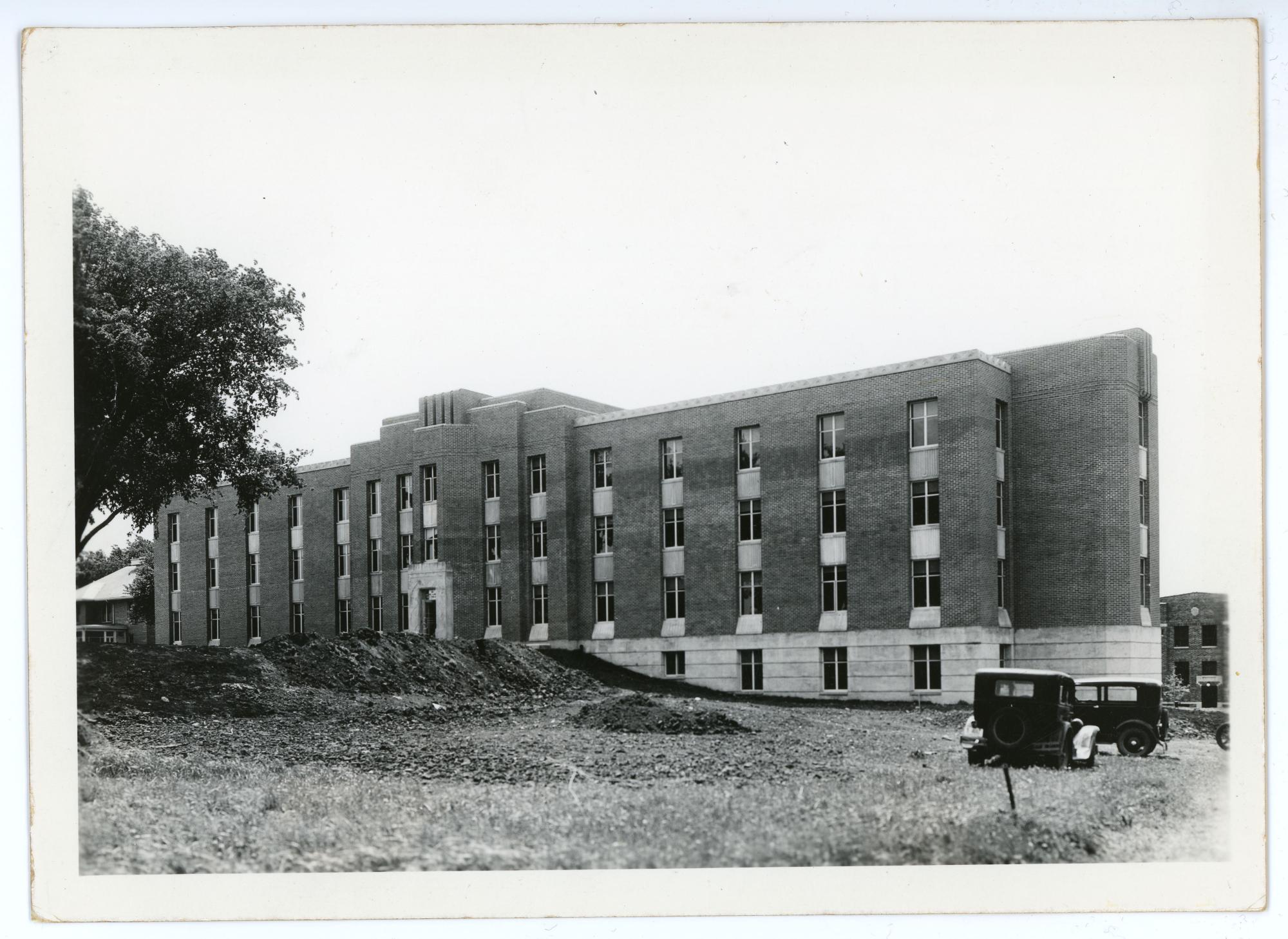
The building opened for use in June 1936 for summer session students. Seventy-six of the 111 accommodations were filled. Men liked their new dorm, and became accustomed to things such as firecrackers thrown from windows, the whistle of steam from the nearby Power Plant, and a tornado that swept through campus in July and broke about twenty windows in Baker Hall.
For the fall term of 1936, 109 of the accommodations were occupied. Margaret Struble was appointed Director of Baker Hall beginning in September 1936. An office telephone system that made use of the phone possible from noon until 6PM was inaugurated in late September. By late October, the House Council was working on several problems relating to telephone service, room inspection, and communications. By the spring of 1937 the College Eye featured a column entitled "Baker Hall Doin's" that included news and gossip from the men's dormitory. Madge R. Bock was named Director of Baker Hall beginning in September 1937 to replace Margaret Struble, who resumed her graduate study at Columbia University.
Unlike women living in Bartlett Hall, men in Baker Hall were not required to "keep hours": that is, men were free to come and go as they pleased. Despite the freedom, Director Bock reported that most men were in the hall by midnight.
Baker Hall featured many elements, in both its architectural style and furnishings, of the Art Deco design movement.
Baker Hall residents had less than a year in which to enjoy their status as inhabitants of the only men's dormitory on campus. In May 1937, college officials announced plans to build a second men's dormitory, to be named in honor of Homer H. Seerley, president of the college from 1886 through 1928. Seerley Hall for Men would be built between Baker Hall and Wright Hall. The new building would resemble Baker Hall, but would have fewer architectural embellishments. In the term of that day, Seerley Hall would be less "modernistic". It would house 121 men in fifty-two double and seventeen single rooms. It would feature a full basement rather than the half basement of Baker Hall. A project budget of about $155,000, similar to the amount spent on Baker Hall, would be financed by profits from Bartlett and Baker Halls.
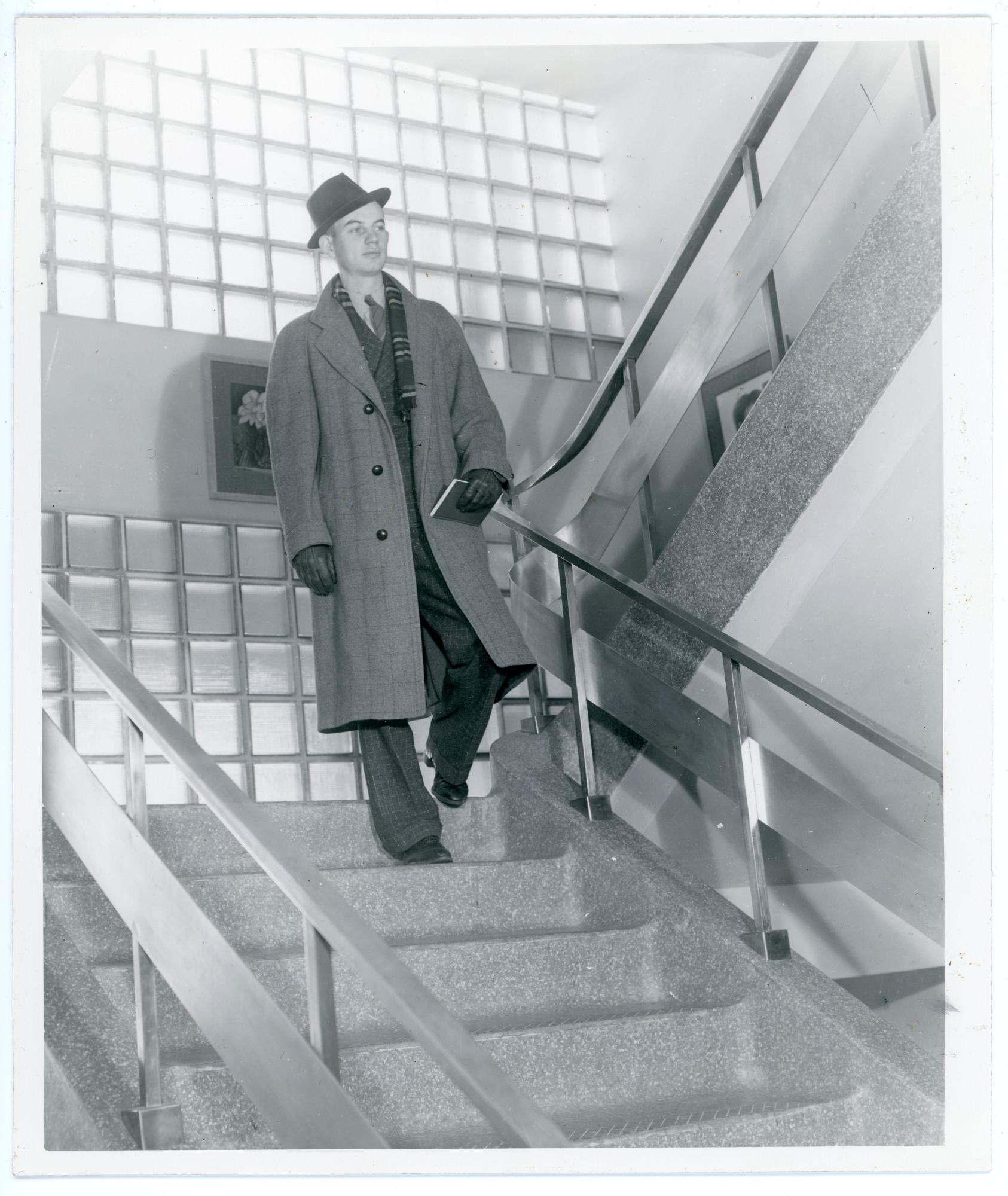
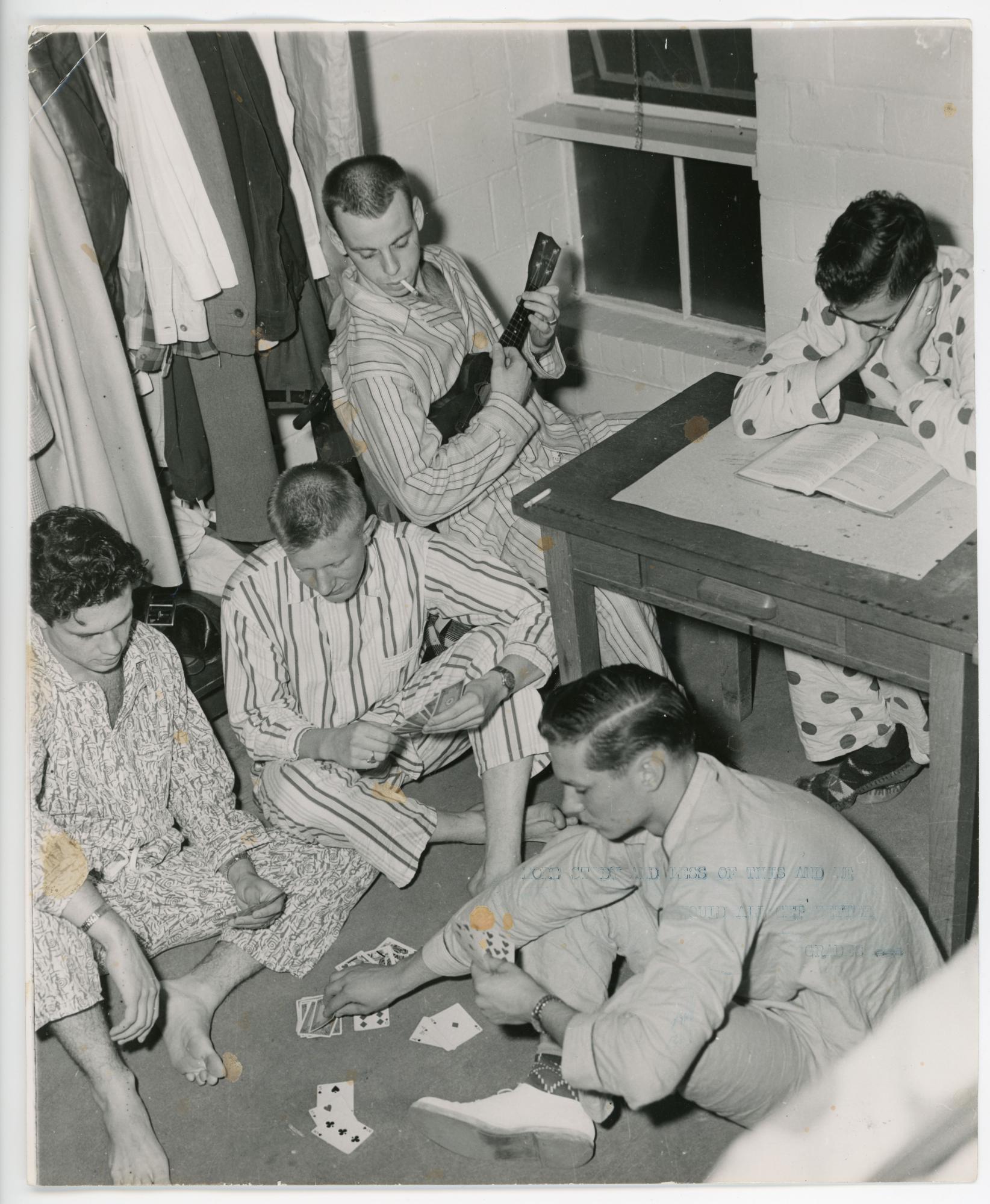
The Board of Education let contracts totaling $165,840 at their June 1937 meeting. Kucharo Construction Company of Des Moines was the general contractor. The anticipated completion date was June 1938. By late July 1937, excavation was well underway with foundation work to start soon. In the course of their work, excavators unearthed a huge, five ton boulder whose origin was at least briefly the topic of campus conversation and speculation. By September, concrete had been poured on the first floor and forms set for the second floor. The project manager estimated that the building would require about 150,000 bricks and 70,000 floor tiles in its construction. Plastering was finished in late February 1938. Painting and marble work occupied the next several months. The building was completed by June but not occupied until the fall term 1938. The total cost of Seerley Hall for Men was $188,556.
Nina Jasman was the first Director of Seerley Hall for Men. She was succeeded by Mae B. De Pree in September 1940. The new hall elected its first council in mid-September 1938, and experienced its first flood shortly thereafter when a faucet in the press room was accidently left open. No damage was reported.
With the completion of the new dormitory, Baker Hall and Seerley Hall for Men began an intertwined relationship that has persisted to this day. The two halls looked very similar and had similar functions. They faced similar problems and often combined to sponsor activities such as dances, but they also became natural rivals in competition such as intramural sports. The Farmers Frolic Dance and the Baker-Seerley Tug-of-War trophy are good examples of the ways in which the halls related to each other. The two men's dormitories were seen as part of the special effort by the college to provide an attractive, pleasant place for men to live as they prepared to become teachers. The expansion of the intercollegiate athletics program was another way in which the college attempted to attract men to the teaching profession. Ultimately, the two halls would be linked physically and combined into one unit for purposes of governance and administration.
On February 20, 1940, a lamp with faulty wiring started a fire in room 309 of Seerley Hall for Men. The concrete construction of the building limited damage to the clothing and bedding in the room. While Baker Hall was intended for men, women lived in the hall in the summer of 1941, due to heavy summer session enrollment by women, and, with the approach of US involvement in World War II, a decline in the enrollment of men. Women working on their teacher certification again lived in Baker Hall in the summer of 1942. These women liked the roominess and the furnishings in the hall, but found the total of just three ironing boards in the entire building to be somewhat less than they needed.
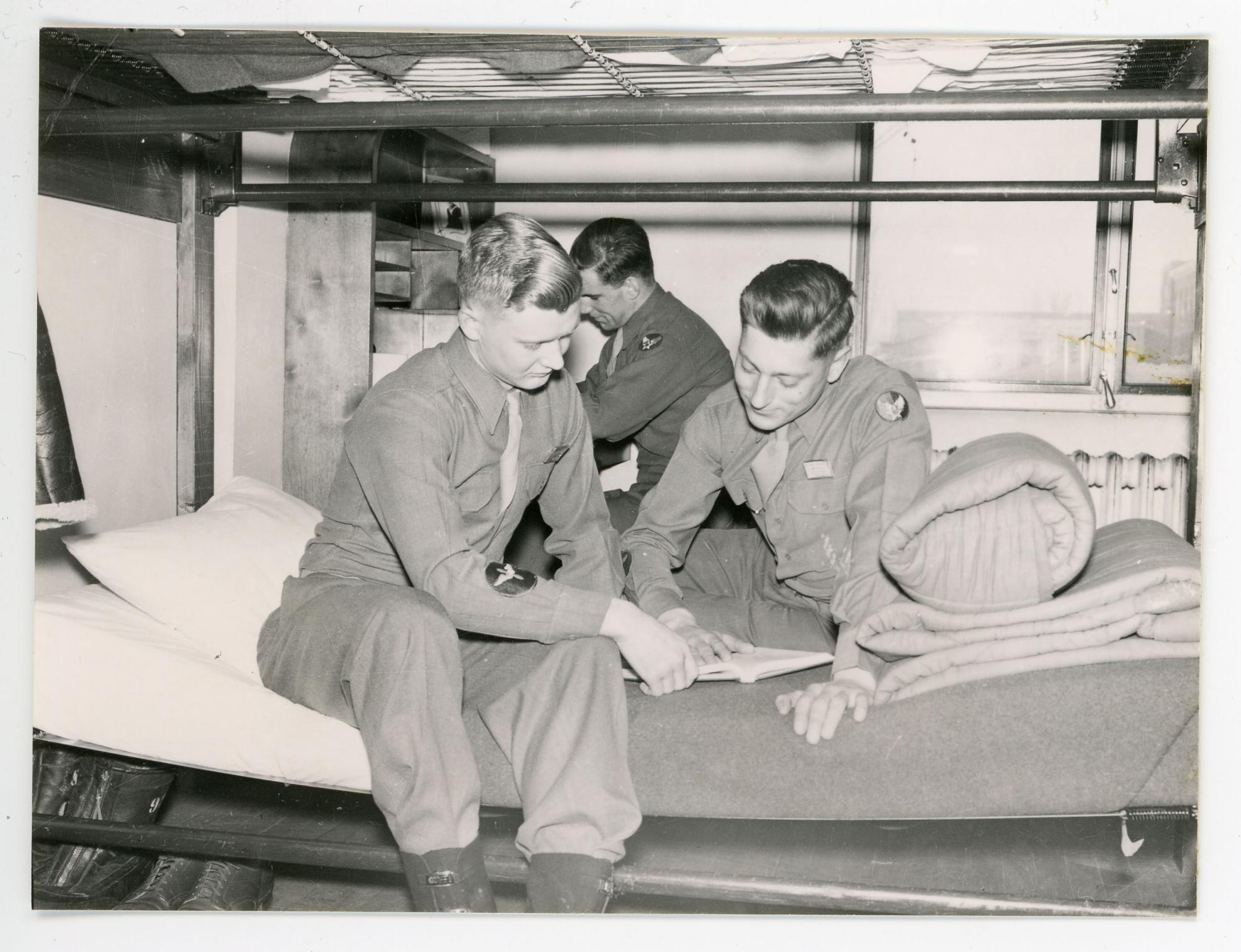
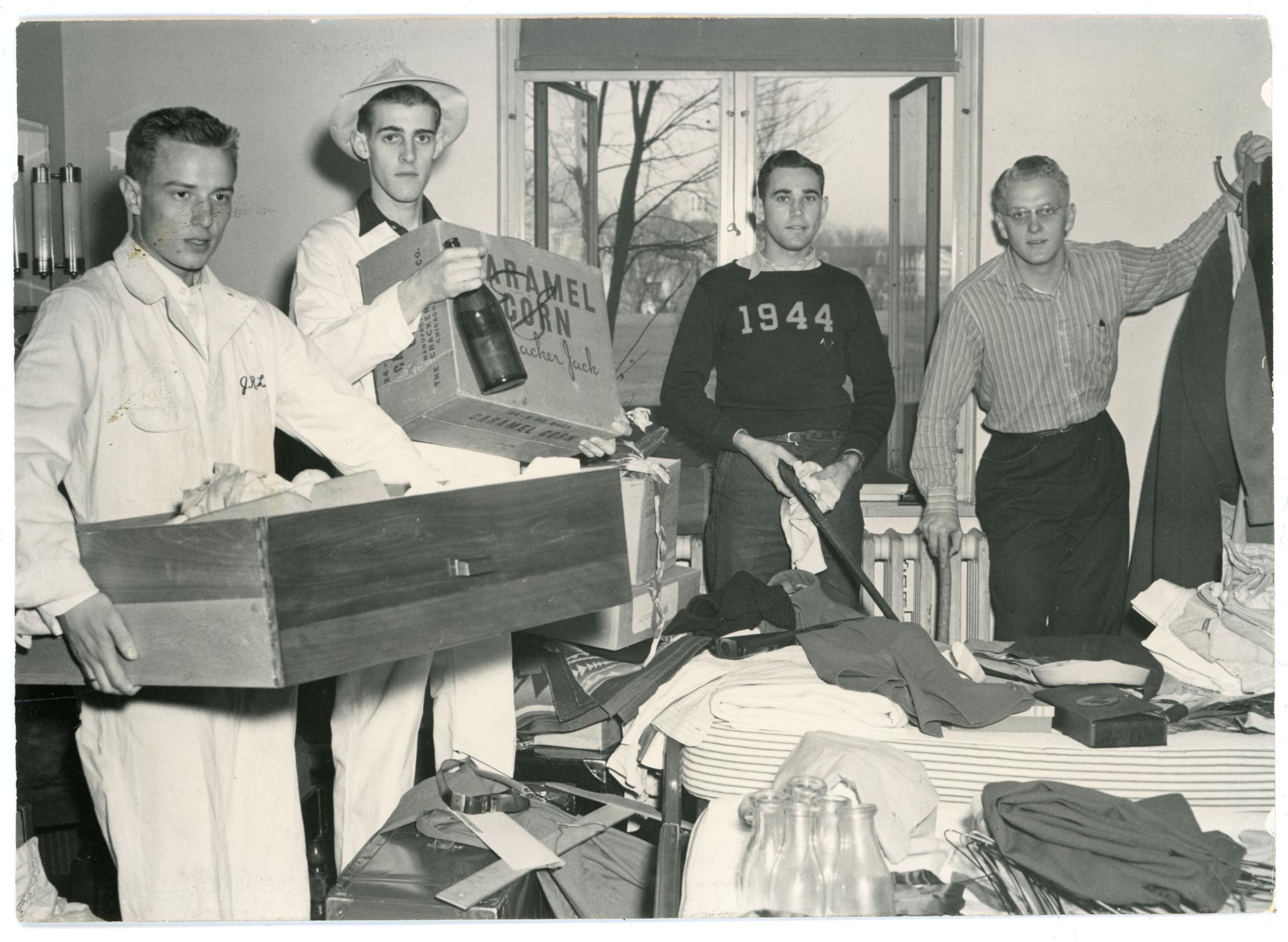

Big changes happened later that year. The college contracted with the US Navy to house and train Women's Appointed Voluntary Emergency Service (WAVES) units on campus. The WAVES, who began arriving in December 1942, would live in Bartlett Hall. Women students would live in Lawther and Seerley Halls. Baker Hall would remain a hall for men students, but three or four men would be housed in double rooms, and two men would be housed in single rooms.
In early 1943 the college also contracted to house and train US Army air crews on campus. Women would be moved out of Seerley Hall and back to Lawther Hall or private homes to accommodate the trainees, who would also occupy portions of Baker Hall. By the spring of 1943, with only eighteen men students registered to live in Baker Hall, college officials decided that it could not operate dormitory service for men until war conditions improved.
Conditions began to change in the spring of 1944, when the college contract to house and train US Army air crews ended. In the summer of 1944 women occupied Baker Hall. And for the fall term of 1944, men occupied Baker Hall and women occupied Seerley Hall. By the fall of 1945, Seerley Hall again became a men's dormitory.
In the spring of 1946 college officials announced plans to build a third men's dormitory just south of Baker and Seerley Halls. It would cost about $300,000 and house about two hundred men. This idea came up several times in the late 1940s, but a third men's dormitory close to Baker and Seerley Halls was never built. It became one of UNI's phantom facilities.
Postwar living conditions in the men's dormitories were very crowded; 290 men lived in accommodations for 229 men in the spring of 1946. By the fall term of 1946, after the college converted recreation rooms into barracks space, 421 men lived in the two dorms. Still, men managed to get their education and to have fun, too. In the summer of 1947, several men even started a tiny radio station in Baker Hall, while others tried to establish a snack bar in the basement. In the fall of 1947, the barracks space was reconverted to recreation rooms. Intramural competition between Baker and Seerley Halls was re-established in spring 1949. During the fall of 1949, residents of Baker and Seerley Halls ratified new constitutions that incorporated stronger democratic standards into hall governance.
In the fall of 1953, Seerley Hall for Men became the first campus dormitory to have a television. It was installed in the solarium; men were allowed to bring their dates into the solarium from 7 until 9:45PM. For fear that students might be tempted to neglect their studies, the television was turned off at 10PM Sunday through Thursday.
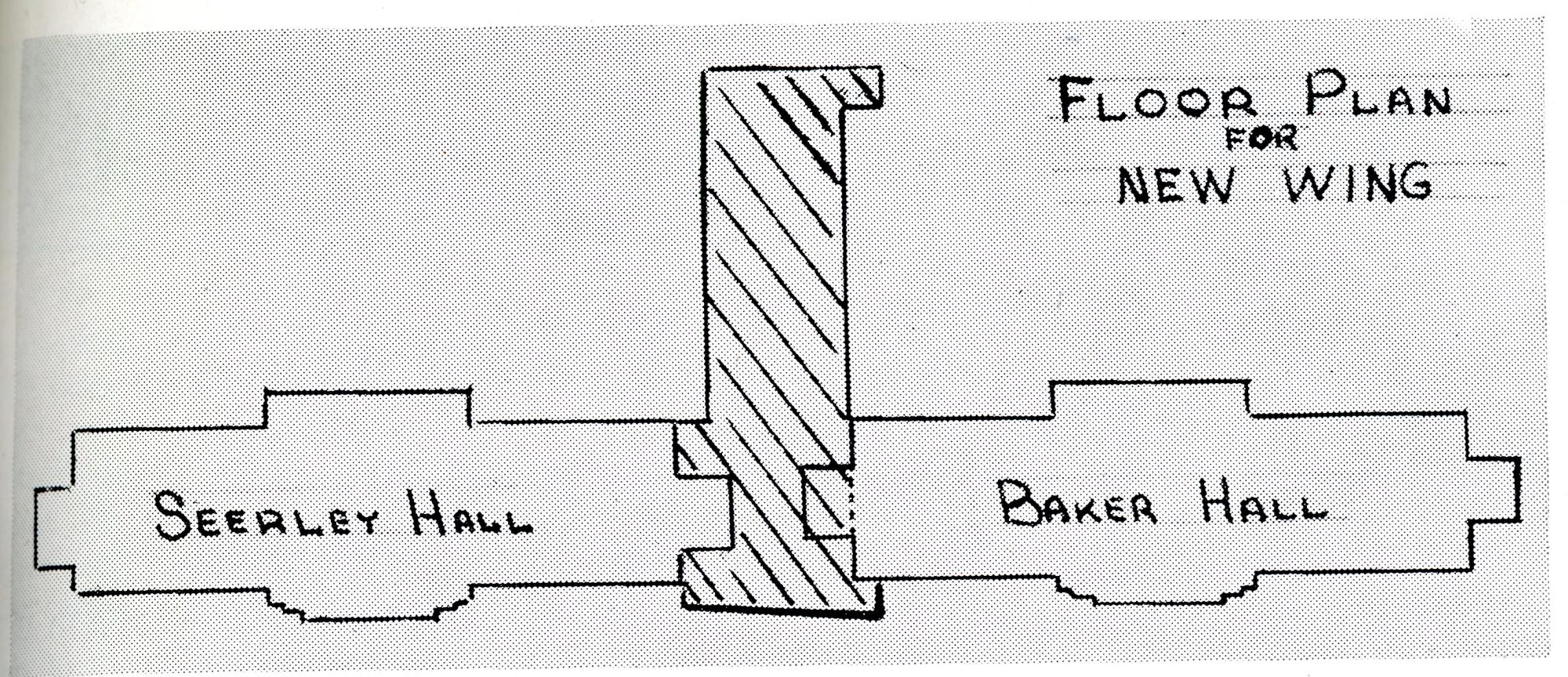
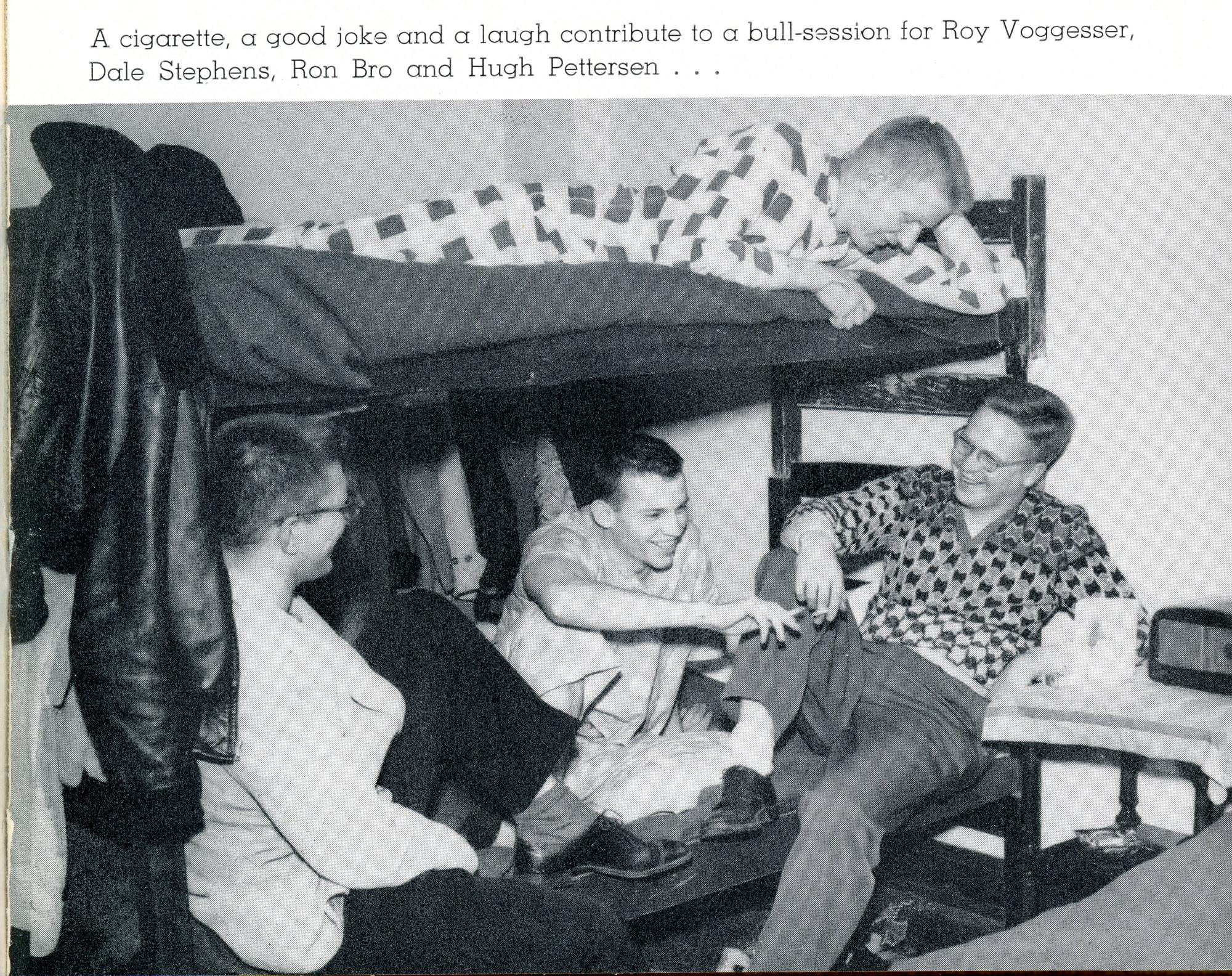
In January 1955, the Board of Education approved an addition that would link Seerley and Baker Halls. The addition would cost about $385,000 and would be built between the two halls and extend south from the junction of the two buildings.
It would be built to house 112 students in double rooms, but it was likely that many rooms would be tripled to bring the number of residents to about 140. It would include an elevator. Completion was scheduled for the beginning of the fall term 1956. One person would direct the whole unit that would include Seerley Hall for Men, Baker Hall, and the new addition. The name of the new combined unit would be Seerley-Baker Hall.
The addition was completed in time for occupancy in fall 1956. Seerley-Baker Hall was divided into nine housing units named for Iowa governors.
In June 1961, the Board of Regents changed the name of Seerley-Baker Hall to George T. Baker Hall to eliminate the hyphenated name. While campus officials wanted to preserve the Seerley name somewhere on campus, they thought that it might be more appropriately applied to an academic building. So the Regents approved naming what was then the Library Building for Homer H. Seerley.
Conditions in Baker Hall remained crowded, while the school searched for ways to meet the need for additional men's housing. A 1961 letter in the College Eye talks about "beds for three, desks for two, and closet room for (?)." The completion of Rider and Shull Halls in the early and middle 1960s helped somewhat.
But UNI had other plans for Baker Hall. With the two Towers dormitories--Bender Hall and Dancer Hall--soon to be completed, UNI secured Regents approval in February 1969 to change Baker Hall from a dormitory to a classroom and office building. Men residents would move to Bender Hall. Plans called for converting the east wing to English Department offices and for using the west wing for women dormitory residents until Dancer Hall was ready. The university agreed to reimburse the dormitory system for the use of the space. Initially the university paid $12,365 per year to make up for lost dormitory revenue on the portion of the building not being used for housing purposes. When the university began to use the whole building for non-housing purposes in 1970-1971, the fee increased to $35,818.
In September 1969, the west wing of the building became the home for 250 women, while the east wing was devoted to faculty offices and classrooms. During this time, the Residence Department experimented with varied living arrangements in Baker Hall. Six to eight women could share living space and make their own arrangement of rooms for sleeping or study. English faculty enjoyed their new offices. Professor Louise Forest said, "It is marvelous to have an office of my own where I can talk to my advisees without having them feel like they have to tell their problems to twenty-four other people in the room." By the 1970-1971 school year, the building was solely a classroom/office building.
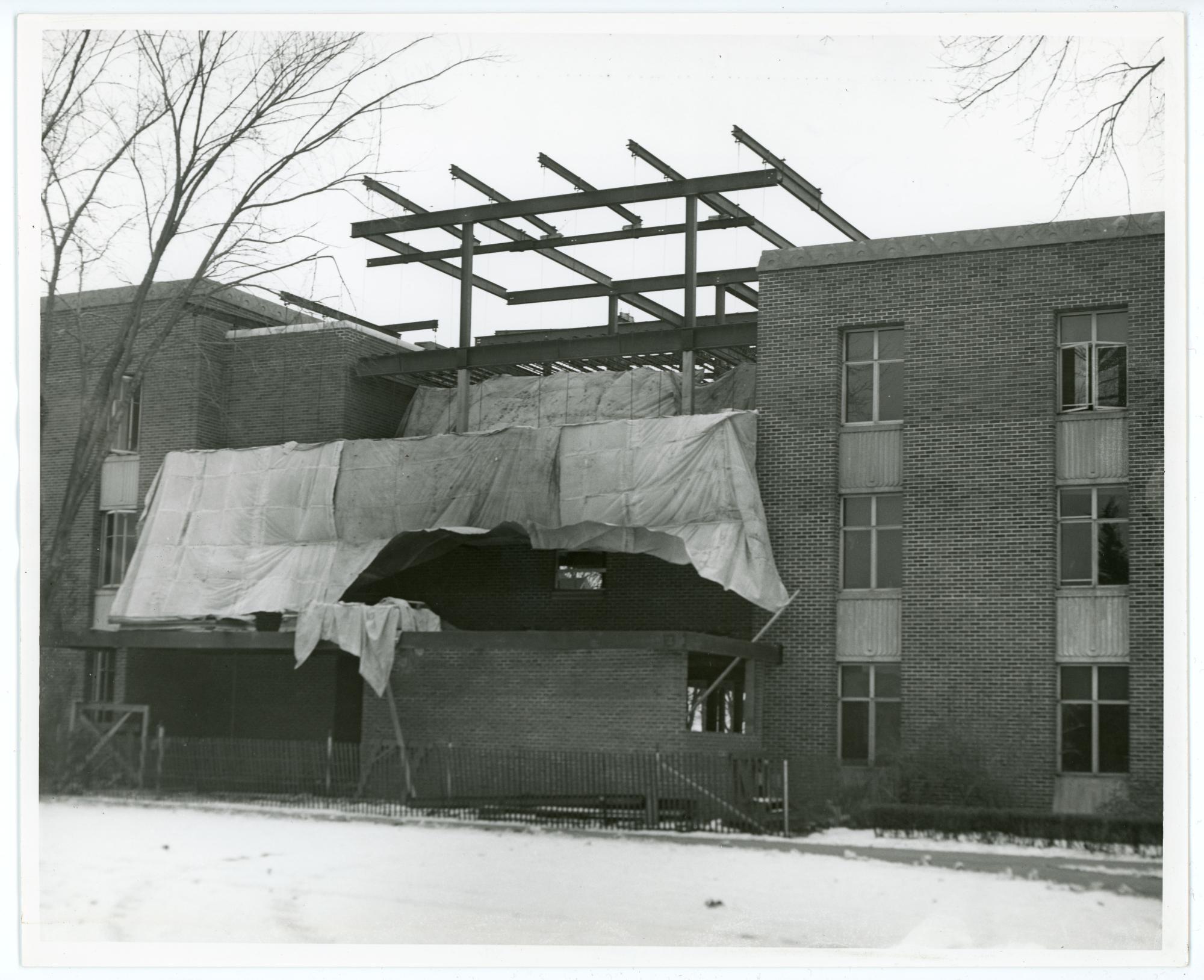

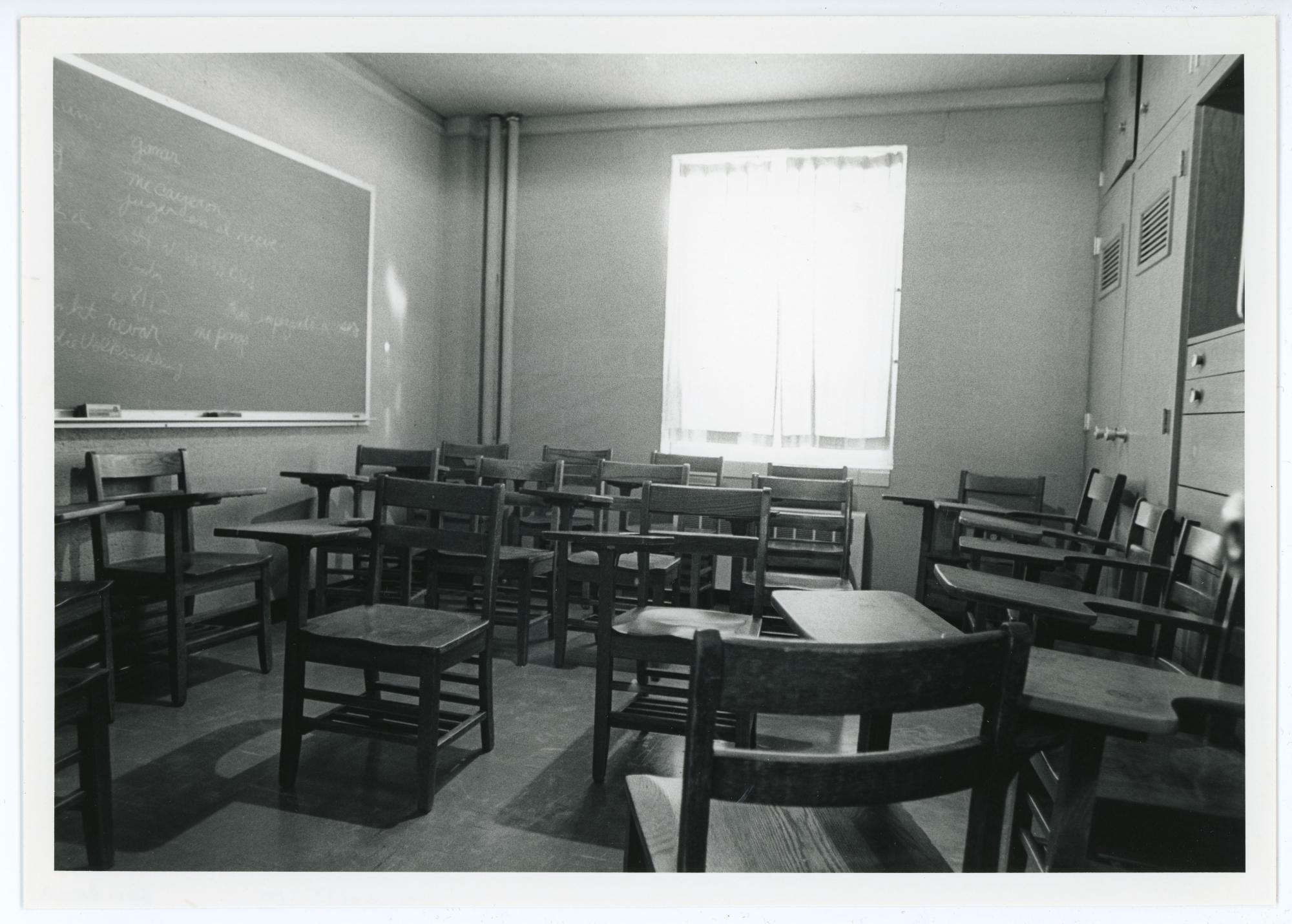
In March 1971, the Board approved a major remodeling project that would reflect this change and turn Baker Hall from a dormitory into an academic building. At least one faculty member, Professor Henri Chabert, did not like some of the measures taken to convert the building. He complained that the university had ruined some beautiful doors and woodwork and made cabinets inaccessible during the conversion. The first departments to reside in Baker Hall were the Departments of English Language and Literature, Educational Psychology and Foundations, Foreign Languages, and Philosophy and Religion. Other administrative units were also a part of the original group: Bureau of Religious Activities, Social Research Center, Clerical Pool, Credit Union, Day Care Center, Educational Opportunities Program and Special Community Services, Environmental Studies, Honors Program, Journalism, and Personnel. The University's Academic Computing Services office was also in Baker Hall for many years.
In 1980 fire doors and safety partitions were installed in Baker Hall. In 1986 Room 134 was named to honor Professor Josef Fox, long-time professor initially in the Department of English and later in the Department of Philosophy and Religion. At the dedication ceremony for the Fox Seminar Room, colleague David Crownfield called Professor Fox " . . . the most widely known, influential and controversial member of the faculty." Later, Room 161 was named the Thompson Commons in honor of Thomas Thompson, who served on the faculty from 1952 through 1994 as a professor of philosophy, head of the Department of Philosophy and Religion, and Dean of the College of Humanities and Fine Arts. In 1996 Baker Hall received electrical and exterior repairs. During these repairs, certain deteriorating Art Deco architectural elements were removed.
Currently, the building is home to the Departments of Modern Languages; Philosophy and Religion; Psychology; Sociology, Anthropology, and Criminology; and English Language and Literature. The Women's Studies Program, the Culture and Intensive English Program, and the Iowa Academy of Science are also located there.
At one point, Baker Hall was scheduled for a $9.9 million renovation, possibly to begin by about 2010. However, in August 2007, university staff noticed mold growing in several areas of the building. According to a February 8, 2008, article in the Northern Iowan, an environmental testing company, Advanced Environmental, found that thirty-six offices in Baker Hall had allergen levels higher than those found in outside air. A cleaning company sanitized twenty-six Baker Hall offices. University officials said that the mold could have been caused by poor housekeeping, dusty books and papers, window air conditioners, or plumbing problems. Several faculty members moved to other quarters as a result of the mold.
In June 2011, the university presented a report on its plans for Baker Hall and Bartlett Hall to the Board of Regents. That report stated that architects had determined that the renovation of Baker Hall would cost as much as constructing a new building. Consequently, the university proposed that Baker Hall be demolished and that Bartlett Hall be converted from residence hall facilities to offices and laboratory space. The cost for this demolition and renovation would be about $21 million. The Regents approved this recommendation. Bids for this work, scheduled to be completed in 2014, went out in May 2012. Stickfort Construction Company, of Hudson, Iowa, won the contract.
In late 2013 and early 2014, offices in Baker Hall moved into the newly-renovated Bartlett Hall. The university conducted a sale of surplus office furniture and shelving in early 2014 and then turned the building over to the demolition contractor.
Many people watched and took photographs of the Baker Hall demolition from the south-facing windows of the Rod Library.
Compiled by Library Assistant Susan Witthoft and volunteer Julie Peterson; edited by University Archivist Gerald L. Peterson, July 1996; substantially revised by Gerald L. Peterson, with research assistance by student assistants Jordan Ockerman and Anthony Boggs and scanning by Library Assistant Gail Briddle, April 2005; last updated, February 26, 2021 (Matthew Bancroft-Smithe, Student Worker).

